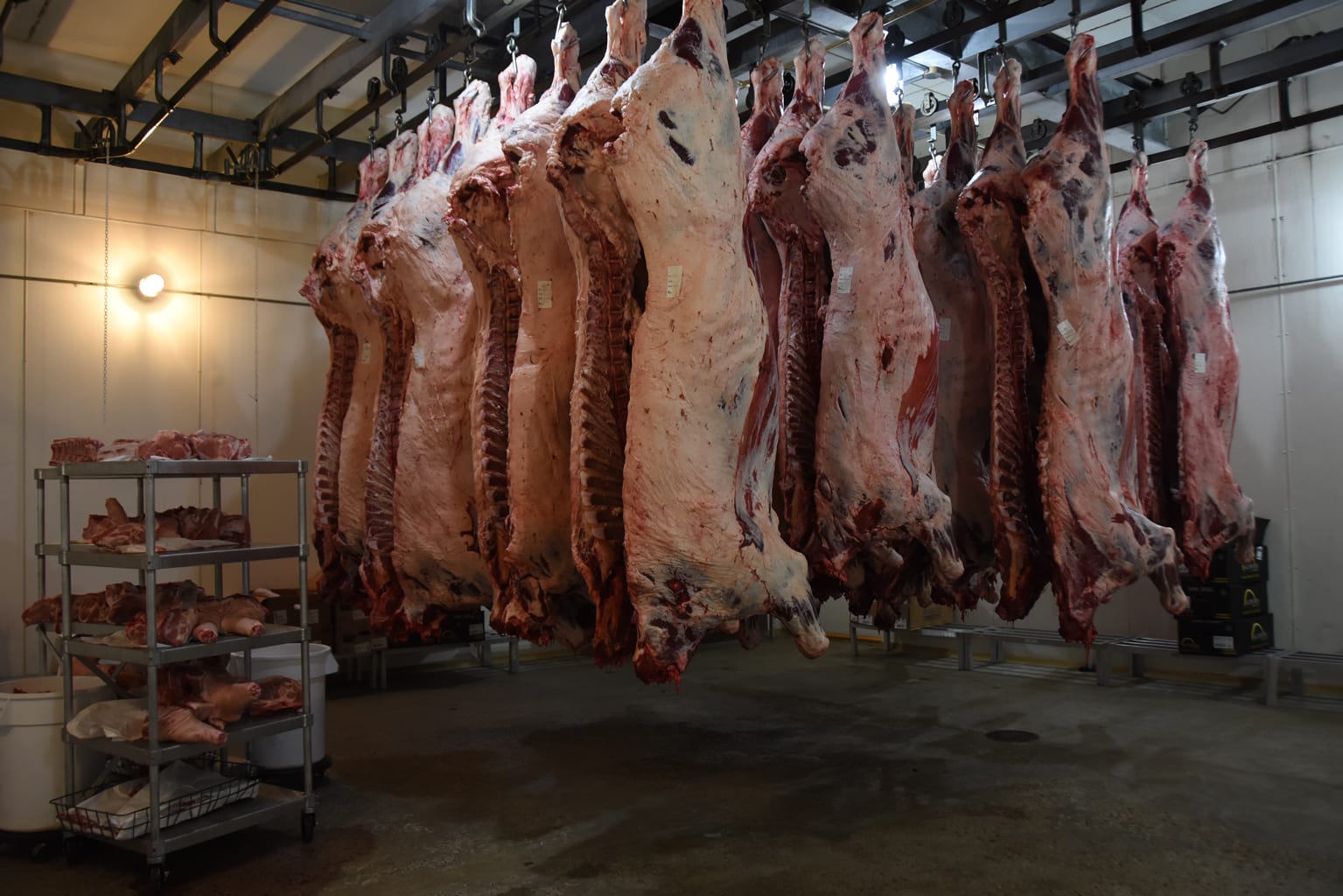Leading Reasons to Patronize Bagley Farms Meat Market Edwardsville IL for Premium Meats
Leading Reasons to Patronize Bagley Farms Meat Market Edwardsville IL for Premium Meats
Blog Article
Uncover the Art of the Butcher's Cut in a Modern Meat Market
In the ever-evolving landscape of contemporary meat markets, the butcher's cut has transcended its traditional roots, merging olden workmanship with contemporary practices. What truly sets the modern-day butcher apart is their ability to forge a deeper link in between consumers and the beginnings of their meat.
Advancement of Butchery Techniques
The development of butchery techniques mirrors an abundant tapestry of development and adaptation driven by innovations in innovation, adjustments in consumer demand, and a much deeper understanding of meat science. Historically, butchery was a craft gave through generations, with methods honed over centuries to optimize return and taste. However, the commercial transformation ushered in automation, transforming traditional methods and allowing large-scale handling.
The mid-20th century saw butchery methods further improved by scientific understandings into muscle biology and meat aging, enhancing both tenderness and preference. Technologies like vacuum cleaner packaging and refrigeration prolonged item shelf-life, allowing butchers to branch out offerings and boost top quality control. This duration additionally noted the surge of customized equipment, such as band saws and meat slicers, which enhanced accuracy and efficiency in meat handling.

Electronic systems now aid in monitoring pet provenance and maximizing cuts to meet specific client preferences. Furthermore, a renewal in artisanal butchery has actually emerged, mixing typical abilities with modern-day knowledge to cater to customers looking for ethical and sustainable meat choices.
Comprehending Meat Cuts
Comprehending the details of meat cuts is vital for both butchers and customers seeking top quality and worth. Each cut comes from a various part of the animal, presenting one-of-a-kind flavors, textures, and food preparation techniques - bagley farms meat market edwardsville il. Proficiency of these distinctions not just enhances cooking experiences yet likewise makes best use of the utility of each carcass. For butchers, accurate cuts reflect ability and regard for the craft, making sure marginal waste and optimal return.

Recognizing muscular tissue structure is important; muscle mass utilized much more often by the animal have a tendency to be tougher and are best suited for slow food preparation approaches, while less-used muscles, like those discovered in the loin, are much more tender and perfect for grilling or roasting. Knowledge with these distinctions empowers consumers to make informed choices, enhancing their culinary ventures.
Choosing Top Quality Meat
Selecting the appropriate meat includes even more than just picking an aesthetically appealing piece from the display. The art of selecting quality meat requires a critical eye and knowledge of specific attributes that indicate quality and excellence.
Secondly, think about the marbling, which describes the white streaks of fat within the muscular tissue. Appropriate marbling is a crucial indication of tenderness and flavor, as it melts throughout cooking, boosting the meat's juiciness. Keep in mind, greater marbling frequently associates with premium top quality cuts, such as USDA Prime.
Structure is another crucial aspect; meat must really feel solid to the touch, not slimy or extremely soft. Furthermore, be mindful of the scent. Fresh meat should have a clean, neutral smell, devoid of any type of sour or off-putting odors.
Pairing Cuts With Food Preparation Approaches

On the other hand, tougher cuts like brisket and chuck roast are rich in collagen, which breaks down into jelly when cooked slowly. These cuts are perfect for braising or slow-moving roasting, enabling the meat to soften over time and establish deep, complex flavors. Cuts such as short ribs and pork shoulder fare well with slow-cooking techniques, where expanded cooking times change their durable structures right into succulent meals.
Lamb shanks and oxtail, which need long term cooking to soften, are excellent candidates for stewing or slow-moving simmering. These methods coax out rich, hearty tastes while preserving dampness. By comprehending the special qualities of each cut, chefs and home chefs alike can elevate their cooking productions, making sure each meal is both satisfying and memorable.
The Butcher's Duty Today
Navigating the evolving landscape of the modern meat market, the butcher's function today extends past simple preparation of cuts. Contemporary butchers are culinary artisans, teachers, and why not try these out advocates for lasting techniques.
Along with crafting precise cuts, butchers now involve straight with customers, using cooking guidance and customizing choices to fit specific demands and preferences. Their experience in meat aging, marbling, and taste accounts encourages consumers to make informed choices, improving their culinary experiences. This tailored service exemplifies the butcher's progressing role as a relied on consultant in the cooking area.
Moreover, butchers are critical published here in reducing waste, using whole pets to develop diverse products such as sausages and stocks. This detailed method not only appreciates the animal however likewise aligns with contemporary sustainability objectives. By doing this, the contemporary butcher personifies both custom and technology, adjusting to an ever-changing market while protecting the artistry and stability of their craft.
Final Thought
Mastery in understanding varied meat cuts and quality indications equips butchers to offer educated referrals, lining up particular cuts with ideal food preparation techniques. By recognizing historic techniques while welcoming contemporary demands, the butcher's role stays important in today's advanced meat market.
Report this page